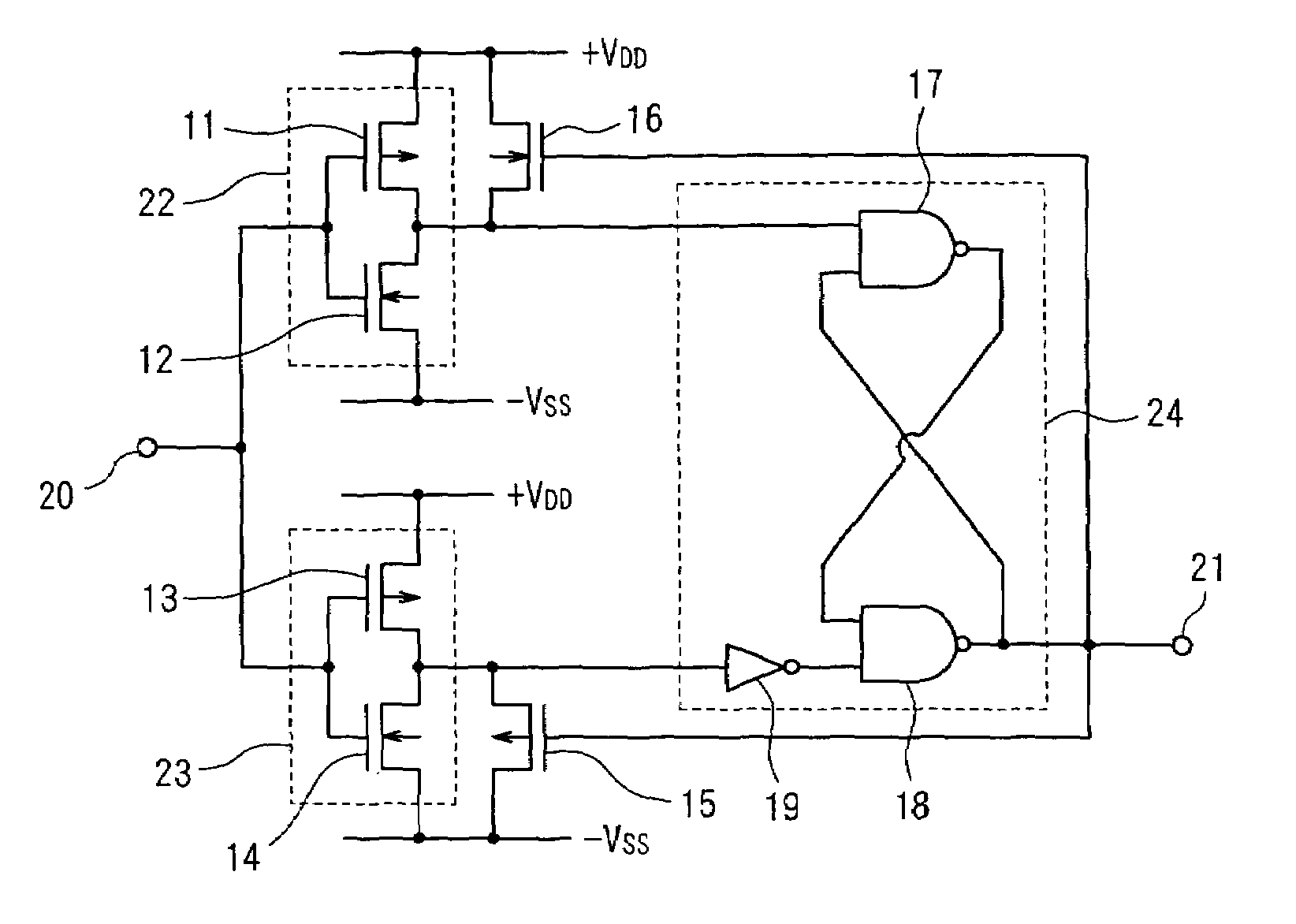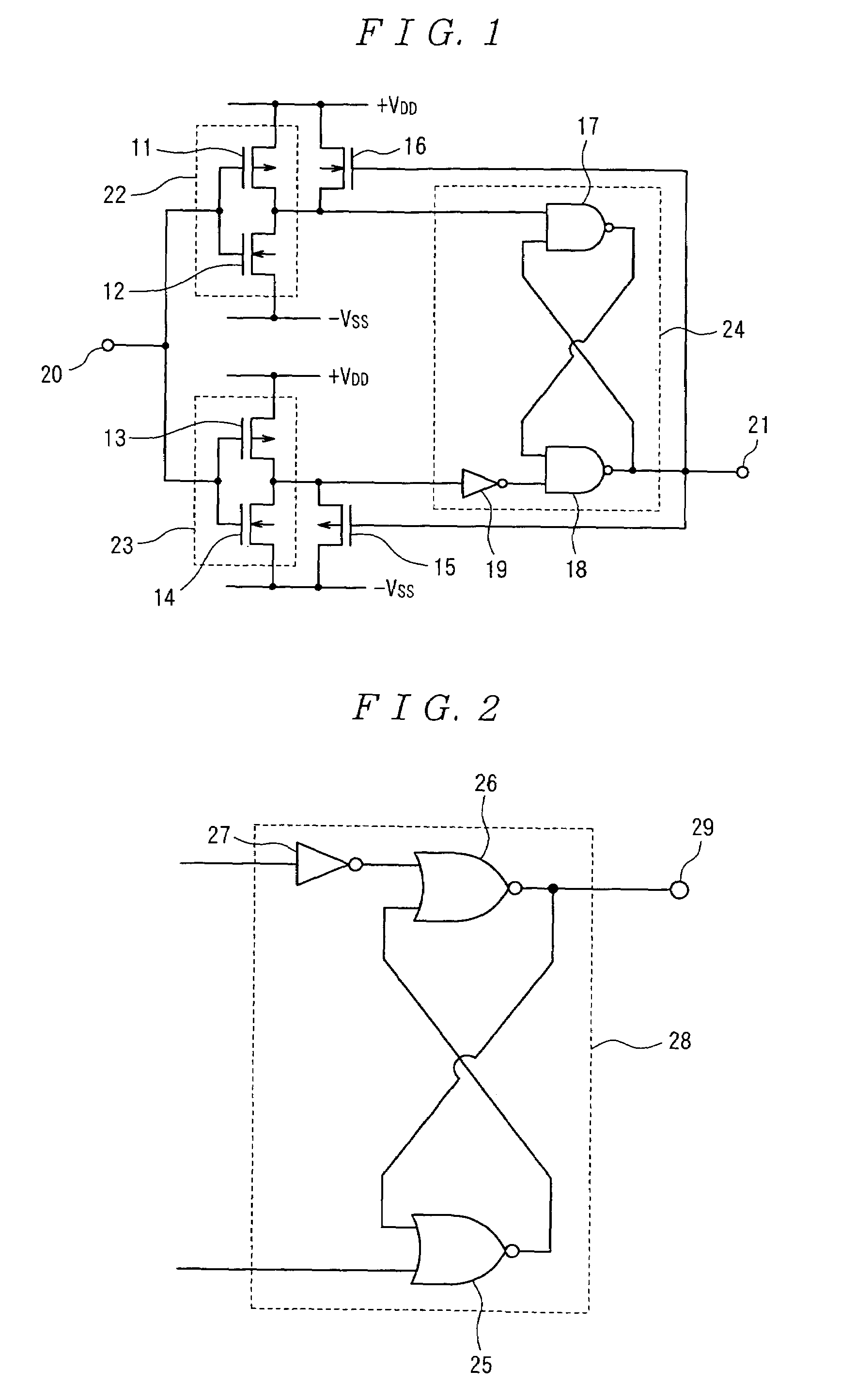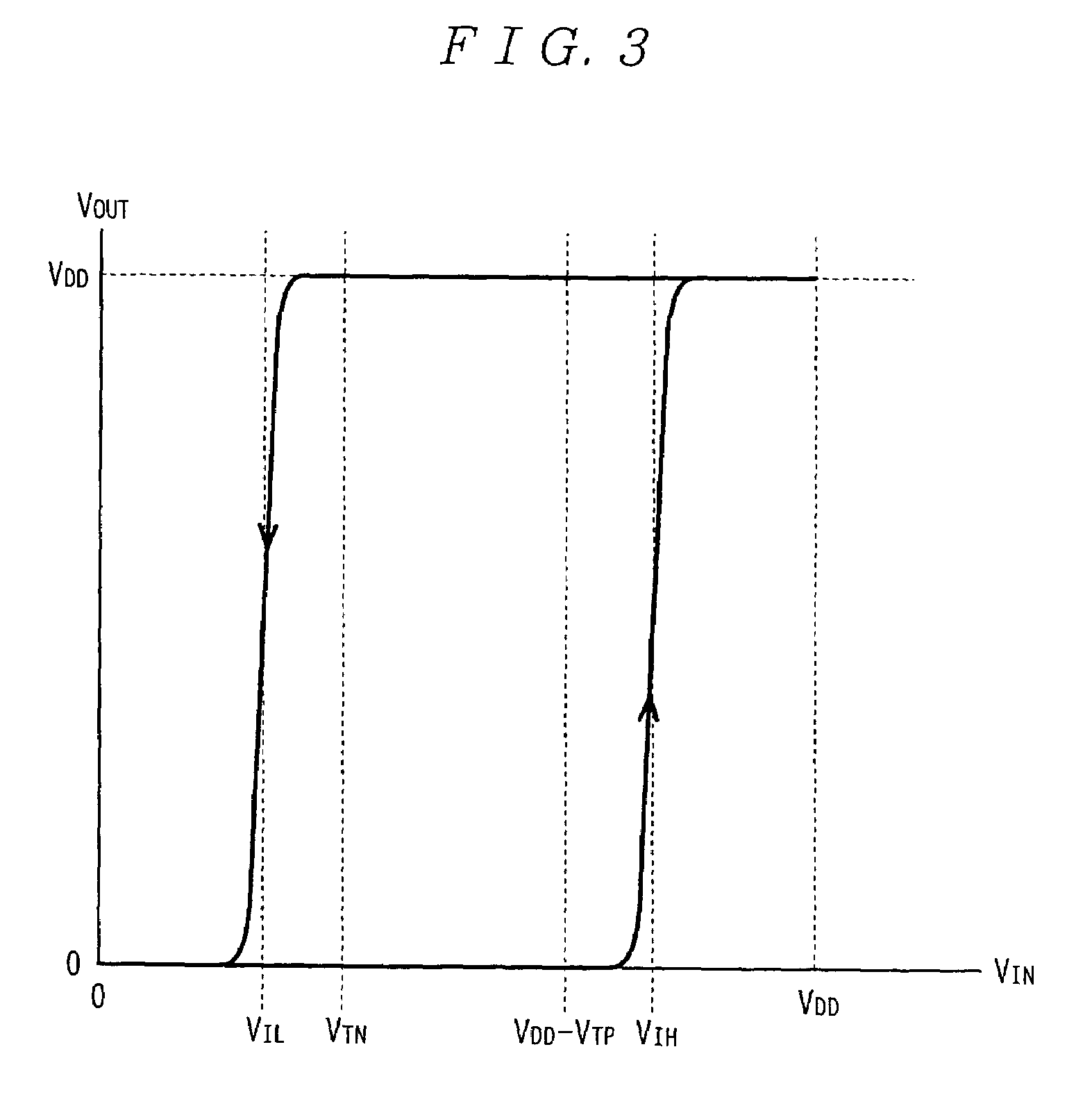High hysteresis width input circuit
a high-hysteresis width, input circuit technology, applied in the direction of pulse generators, pulse techniques, electrical apparatus, etc., can solve the problems of inability to set the conductance constant, the hysteresis width is actually much smaller, and the inability to secure a sufficient hysteresis width, etc., to achieve a large hysteresis width, reliable supply of hysteresis input circuits, and resistance to noise
- Summary
- Abstract
- Description
- Claims
- Application Information
AI Technical Summary
Benefits of technology
Problems solved by technology
Method used
Image
Examples
embodiment 1
(Embodiment 1)
[0067]FIG. 1 is a circuit diagram showing a first embodiment of the present invention.
[0068]As shown in FIG. 1, this first embodiment is provided with an inverter circuit 22, an inverter circuit 23, a latch circuit 24, an N-type MOSFET 16 and a P-type MOSFET 15 and these are formed into an integrated circuit.
[0069]The inverter circuit 22 is made up of a CMOS inverter circuit which combines a P-type MOSFET 11 and an N-type MOSFET 12 and operates on a power supply +VDD of a positive electrode and a power supply −VSS of a negative electrode.
[0070]That is, the source electrode of the P-type MOSFET 11 is connected to the power supply +VDD of the positive electrode. The source electrode of the N-type MOSFET 12 is connected to the power supply −VSS of the negative electrode. The gate electrodes of the P-type MOSFET 11 and the N-type MOSFET 12 are connected together and their common connection section is connected to an input terminal 20. Furthermore, the drain electrodes of t...
modification example of embodiment 1
(Modification Example of Embodiment 1)
[0123]The present invention is not limited to the first embodiment shown in FIG. 1. FIG. 1 shows an example of the latch circuit 24 made up of NAND circuits 17, 18 and an inverter circuit 15, but this is only an example and this latch circuit can be replaced by a latch circuit 28 made up of NOR circuits 25, 26 and inverter circuit 27 as shown in FIG. 2.
[0124]In this case, however, the output of the inverter circuit 22 in FIG. 1 is connected to the input of the inverter circuit 27 in FIG. 2 and the output of the inverter circuit 23 in FIG. 1 is connected to the first gate of the NOR circuit 25 in FIG. 2.
[0125]Furthermore, regarding the setting of (βNS / βN1) of conditional Expression (16) and (βPS / βP1) of conditional Expression (29), the setting method by changing the channel width of a MOSFET transistor has been explained, but it is also possible to use a method of changing a channel length of a transistor. When the channel width is increased, β i...
embodiment 2
(Embodiment 2)
[0128]FIG. 4 is a circuit diagram showing a second embodiment of the present invention.
[0129]As shown in FIG. 4, this second embodiment is provided with an inverter circuit 42, a buffer circuit 43, an N-type MOSFET 33 and a P-type MOSFET 34 and these are formed into an integrated circuit.
[0130]The inverter circuit 42 is made up of a CMOS inverter circuit combining a P-type MOSFET 31 and an N-type MOSFET 32 and operates on a power supply +VDD of a positive electrode and a power supply −VSS of a negative electrode.
[0131]That is, the source electrode of the P-type MOSFET 31 is connected to the power supply +VDD of the positive electrode. The source electrode of the N-type MOSFET 32 is connected to the power supply −VSS of the negative electrode. Furthermore, both gate electrodes of the P-type MOSFET31 and N-type MOSFET 32 are connected together and a common connection section is connected to an input terminal 40. Furthermore, the drain electrodes of the P-type MOSFET 31 a...
PUM
 Login to View More
Login to View More Abstract
Description
Claims
Application Information
 Login to View More
Login to View More - R&D
- Intellectual Property
- Life Sciences
- Materials
- Tech Scout
- Unparalleled Data Quality
- Higher Quality Content
- 60% Fewer Hallucinations
Browse by: Latest US Patents, China's latest patents, Technical Efficacy Thesaurus, Application Domain, Technology Topic, Popular Technical Reports.
© 2025 PatSnap. All rights reserved.Legal|Privacy policy|Modern Slavery Act Transparency Statement|Sitemap|About US| Contact US: help@patsnap.com



